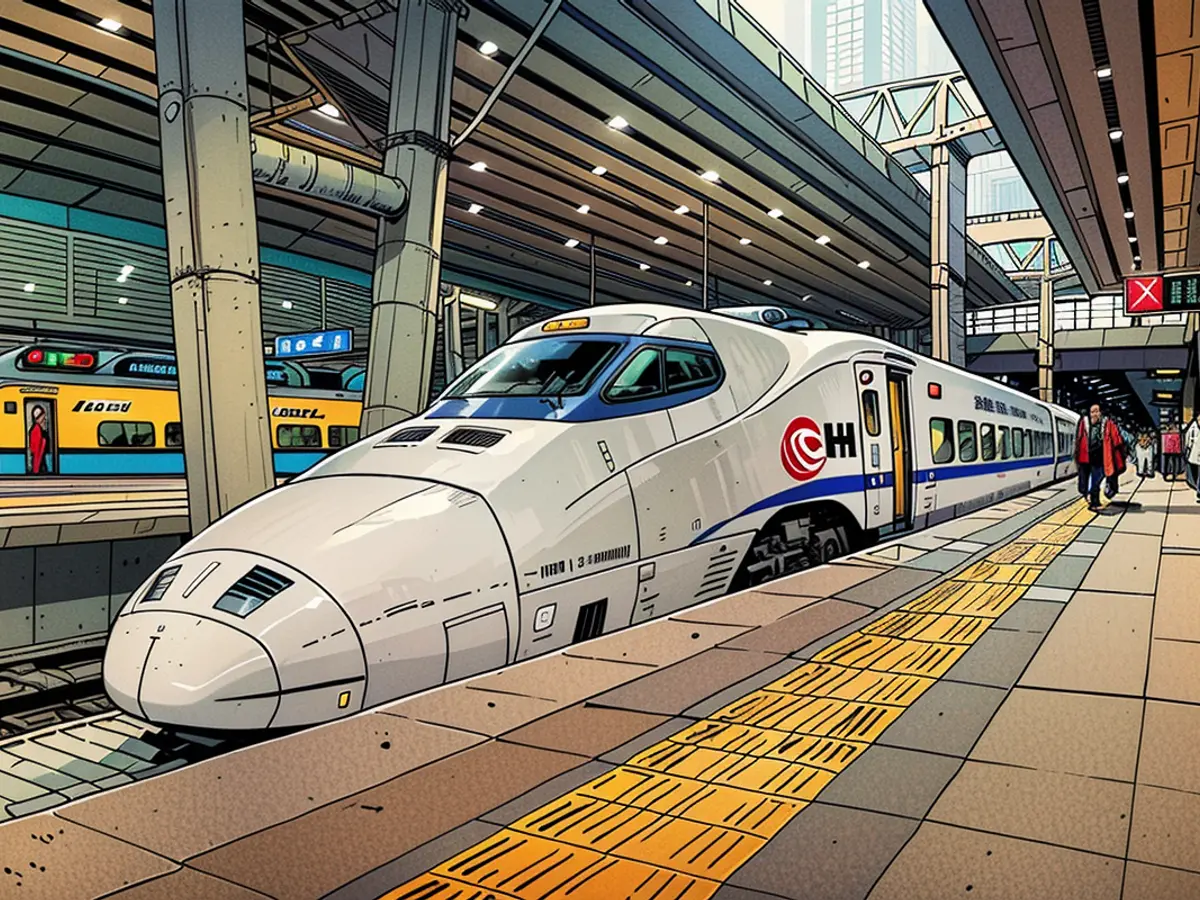Rapid passenger train service now links Beijing, Shanghai, and Hong Kong at increased speeds.
Two fresh, overnight train routes commenced operation on June 15, connecting the city with Beijing and Shanghai.
These trains depart from Hong Kong West Kowloon Station in the late evening, reaching Beijing at 6.53 a.m. and Shanghai at 6.45 a.m., approximately reducing the travel duration by half (around 12.5 hours for Beijing and 11 hours for Shanghai). Return trips from Beijing and Shanghai depart around 8 p.m. and arrive in Hong Kong at 8.47 a.m. and 7.29 a.m., respectively. These routes run four days a week, departing all three stations every evening from Friday to Monday.
John Lee, Hong Kong’s chief executive, expressed excitement about these new services in a press release, stating they would offer greater comfort, faster travel, and a wider range of destinations, including popular tourist cities. These intercity railway services, Beijing-Kowloon and Shanghai-Kowloon, started in 1997. At that time, the train ride to China’s capital took around 24 hours while the journey to Shanghai was about 19 hours.
The services were halted during the pandemic in 2020 and have been replaced by these high-speed alternatives launched on June 15.
However, although the new trips drastically cut the overnight travel time, they are slightly longer than the daytime bullet trains already connecting Hong Kong and the two cities in mainland China. Currently, the train company provides one daily high-speed connection to Beijing, taking around 8.5 hours, and one to Shanghai, approximately 7.5 hours.
So, why choose the longer journey? The new sleeper trains may not be the quickest way to get between Hong Kong and Beijing or Shanghai, but they are preferable for business travelers who need to arrive well-rested before standard office hours, as well as leisure tourists who prefer not to spend a whole day on the train or save money on accommodations.
Inside the sleeper trains
Each train has 16 carriages, including 13 sleeper cars, two second-class seating cars, and one dining car. Passengers can pick from three seating options: Second class (without a bed), sleeper, and deluxe sleeper.
A standard sleeper cabin accommodates four passengers with two bunk beds. The deluxe version, currently available only on the Hong Kong-Shanghai route, offers a bunk bed, wardrobe, and sofa.
Prices vary from HKD937 to HKD1,506 ($120-$193) for the Hong Kong-Beijing route and HKD682 to HKD2,128 ($88-273) for the Hong Kong-Shanghai route.

Passengers can reserve their tickets on China Railway’s official ticketing site 12306.cn. For trains departing from Hong Kong, one should search “hkwestkowloon.” International travelers can book through ticketing platforms such as Trip.com or purchase their tickets directly at the West Kowloon Station.
A shared immigration checkpoint within West Kowloon Station enables passengers to bypass additional border checks when entering or exiting Hong Kong. However, travelers need a valid China visa or travel document to ride the train, as Hong Kong is governed under a separate legal framework.
Hong Kong's contentious high-speed railway
Opened in 2018, the 26-kilometer Hong Kong high-speed railway is a part of the larger Guangzhou-Shenzhen-Hong Kong Express Rail Link (XRL).
The construction of this project, which cost over $10.7 billion, provided a connection to China’s 25,000-kilometer national high-speed rail network. The Hong Kong section was the first to implement mainland Chinese laws within its territory, leading to much controversy before its launch.
The high price, limited speed (the Hong Kong section has a maximum speed of 200 kilometers/hour – significantly lower than the usual 300 kilometers/hour due to its short distance) and political implications all contributed to a cloud of controversy surrounding the new railway.
Despite the controversy, the introduction of the Express Rail Link offered an alternative way to travel to major Chinese cities via Hong Kong – without experiencing China's notorious flight delays.
At the Hong Kong station, direct trips to 78 destinations around China are available daily, with over 70,600 passengers using the network according to official figures.

Read also:
These new train services offer a travel option for passengers heading to Beijing or Shanghai, with reduced overnight durations compared to previous routes.
Business travelers and leisure tourists might opt for the sleeper trains, providing comfort and arrival before standard office hours or saving on accommodations, despite the slight prolongation of travel time compared to daytime bullet trains.
- Fear of escalation in the Middle East: US Secretary of State Blinken travels to the region again
- Government circles: US Secretary of State Blinken to travel to Middle East again
- Bridging days 2024: How you can double your vacation this year
- Germany has wanderlust: how tour operators and airlines are looking ahead to the next travel year








